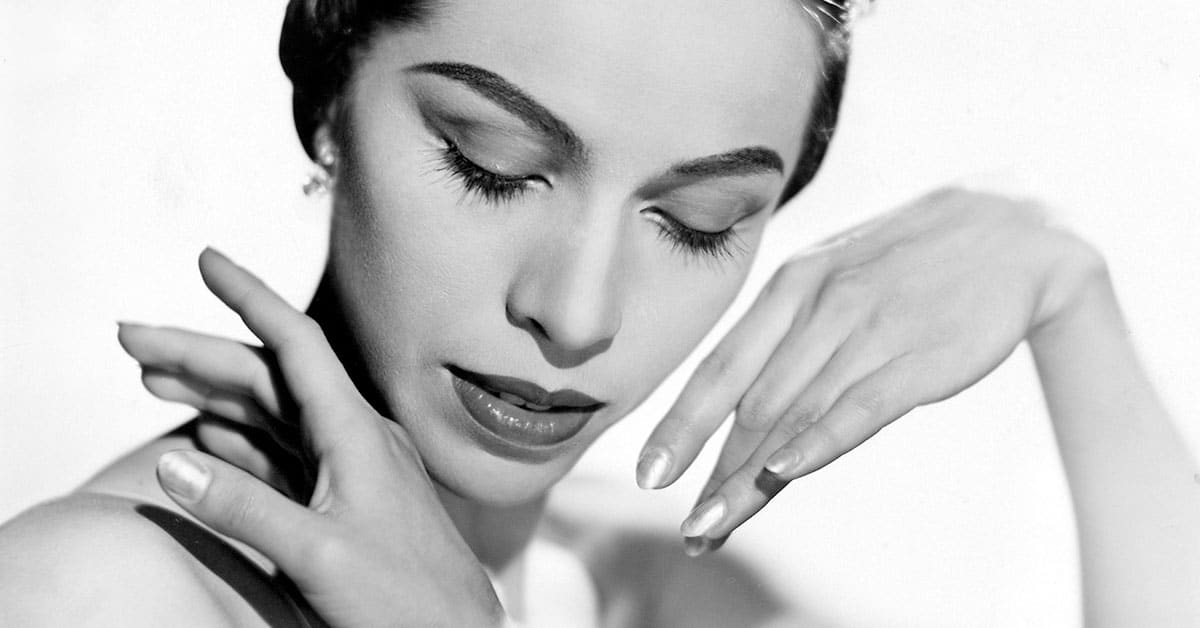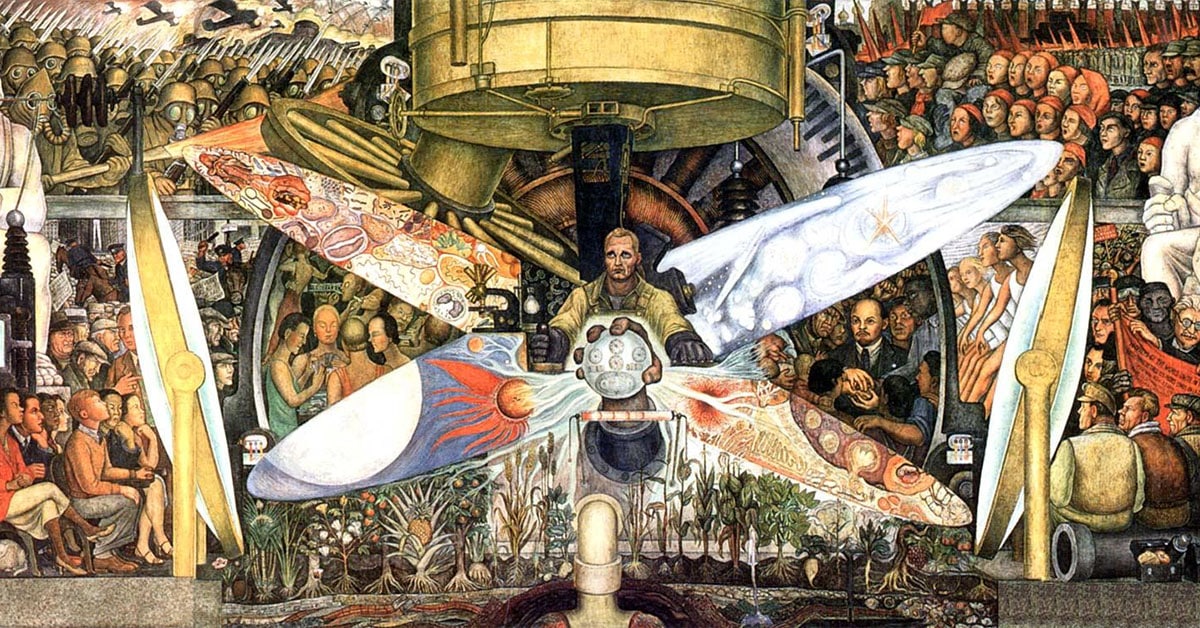Remember Maria TallChief (Osage Nation), America's First Prima Ballerina and NY City Ballet who popularized The Nutcracker
Maria Tallchief was born Ki He Kah Stah Tsa (Elizabeth Marie "Betty" Tallchief) in Fairfax, Oklahoma on January 24, 1925. She is a member of the Osage Nation, one of the First Nations of what is now Oklahoma, Kansas, Missouri and Arkansas.
She is remembered as America's first prima ballerina and the dancer who helped make George Balanchine's "Nutcracker" the most popular ballet in the world.
Maria TallChief was a natural dancerShe was tall, beautiful and really knew how to dance. Genius usually shows up early. Like many other great ballerinas, Tallchief was a natural child. She was smart too, so smart that her teachers made her skip the first two years of elementary school.
Tallchief's story is filled with disappointments, but it always picked itself up and carried on. For anyone, becoming a prima ballerina is exceptional. Coming from a marginalized community at that time is truly amazing. Even today, we have to be twice as good and three times as clean to be treated the same.
Dancing is a natural expression in many indigenous and African communitiesIn many Indigenous cultures around the world, dance is not something special that we do or don't do. Dance is an integral part of life.
We dance to show that we belong to our family and our community. Our dance also shows our individuality within our community. We dance for faith and we dance for love. It's the same thing, isn't it?
Go to a place where luck can make a fortuneThere is a lesson for today in the story of Maria Tallchief. We are at a time when America is ready and even hungry for people of color culture. Life doesn't usually make your dreams come true right away, but if you position yourself close to your dream, talent, hard work and luck can make it happen.
In 1933, Tallchief's family moved to Los Angeles so that she and her sister could study. The ballet is an Italo-French court dance, but was preserved in Russia and Denmark when the French Revolution ended the French monarchy. In Los Angeles, she met and worked with several Europeans. She performed in “Chopin Concerto” for Polish choreographer Bronislava Nijinska. She obtained an audition for Serge Denham, the director of the Ballet Russe de Monte Carlo, the successor company to the Ballets Russes which relaunched ballet through its American tours. Still nothing happened.
George Balanchine and the New York City BalletLook at Maria's hands in the photo. This is the Balanchine technique. As in the street, a dancer's hands reveal which dance gang he belongs to.
Tallchief moved to New York in 1942. She sought out Serge Denham, but was told that the Ballet Russe de Monte Carlo was not looking for dancers. She was called back a few days later because the company had a Canadian tour that most dancers in the company couldn't do because they were Russian immigrants without American passports. Tallchief got the job and was later hired permanently to replace a dancer who became pregnant.
Once she got close to her dream, that's what happened. On her first day as a full member of the company, Tallchief's former teacher Nijinska shows up to stage "Chopin Concerto", the very piece Maria danced for Nijinska in Los Angeles. Tallchief earned a promotion and was named understudy for Russian prima Nathalie Krassovska.
When Krassovska suddenly left the company, Tallchief was able to perform. New York Times dance critic John Martin gave it rave reviews. Still nothing really happened.
In 1944, George Balanchine was hired to direct "Song of Norway". They worked together and he cast her in important roles. The two were probably drawn to the elegance of each other's craftsmanship. They became a couple, but that's not the most important part of the story.
Tallchief joined Balanchine in Paris while directing the Paris Opera Ballet in 1947. There she became the first American to dance with this legendary company.
When the couple returned to New York, the Balanchine's Ballet Society became the New York City Ballet and Tallchief was its first prima ballerina. Balanchine then created the lead role in "The Firebird" for her. In 1949, dancing this role made her a big star.
In 1954, Balanchine staged "The Nutcracker" with Tallchief in the role of the Sugar Plum Fairy. Balanchine's choice...

Maria Tallchief was born Ki He Kah Stah Tsa (Elizabeth Marie "Betty" Tallchief) in Fairfax, Oklahoma on January 24, 1925. She is a member of the Osage Nation, one of the First Nations of what is now Oklahoma, Kansas, Missouri and Arkansas.
She is remembered as America's first prima ballerina and the dancer who helped make George Balanchine's "Nutcracker" the most popular ballet in the world.
Maria TallChief was a natural dancerShe was tall, beautiful and really knew how to dance. Genius usually shows up early. Like many other great ballerinas, Tallchief was a natural child. She was smart too, so smart that her teachers made her skip the first two years of elementary school.
Tallchief's story is filled with disappointments, but it always picked itself up and carried on. For anyone, becoming a prima ballerina is exceptional. Coming from a marginalized community at that time is truly amazing. Even today, we have to be twice as good and three times as clean to be treated the same.
Dancing is a natural expression in many indigenous and African communitiesIn many Indigenous cultures around the world, dance is not something special that we do or don't do. Dance is an integral part of life.
We dance to show that we belong to our family and our community. Our dance also shows our individuality within our community. We dance for faith and we dance for love. It's the same thing, isn't it?
Go to a place where luck can make a fortuneThere is a lesson for today in the story of Maria Tallchief. We are at a time when America is ready and even hungry for people of color culture. Life doesn't usually make your dreams come true right away, but if you position yourself close to your dream, talent, hard work and luck can make it happen.
In 1933, Tallchief's family moved to Los Angeles so that she and her sister could study. The ballet is an Italo-French court dance, but was preserved in Russia and Denmark when the French Revolution ended the French monarchy. In Los Angeles, she met and worked with several Europeans. She performed in “Chopin Concerto” for Polish choreographer Bronislava Nijinska. She obtained an audition for Serge Denham, the director of the Ballet Russe de Monte Carlo, the successor company to the Ballets Russes which relaunched ballet through its American tours. Still nothing happened.
George Balanchine and the New York City BalletLook at Maria's hands in the photo. This is the Balanchine technique. As in the street, a dancer's hands reveal which dance gang he belongs to.
Tallchief moved to New York in 1942. She sought out Serge Denham, but was told that the Ballet Russe de Monte Carlo was not looking for dancers. She was called back a few days later because the company had a Canadian tour that most dancers in the company couldn't do because they were Russian immigrants without American passports. Tallchief got the job and was later hired permanently to replace a dancer who became pregnant.
Once she got close to her dream, that's what happened. On her first day as a full member of the company, Tallchief's former teacher Nijinska shows up to stage "Chopin Concerto", the very piece Maria danced for Nijinska in Los Angeles. Tallchief earned a promotion and was named understudy for Russian prima Nathalie Krassovska.
When Krassovska suddenly left the company, Tallchief was able to perform. New York Times dance critic John Martin gave it rave reviews. Still nothing really happened.
In 1944, George Balanchine was hired to direct "Song of Norway". They worked together and he cast her in important roles. The two were probably drawn to the elegance of each other's craftsmanship. They became a couple, but that's not the most important part of the story.
Tallchief joined Balanchine in Paris while directing the Paris Opera Ballet in 1947. There she became the first American to dance with this legendary company.
When the couple returned to New York, the Balanchine's Ballet Society became the New York City Ballet and Tallchief was its first prima ballerina. Balanchine then created the lead role in "The Firebird" for her. In 1949, dancing this role made her a big star.
In 1954, Balanchine staged "The Nutcracker" with Tallchief in the role of the Sugar Plum Fairy. Balanchine's choice...
What's Your Reaction?















![Three of ID's top PR executives quit ad firm Powerhouse [EXCLUSIVE]](https://variety.com/wp-content/uploads/2023/02/ID-PR-Logo.jpg?#)







